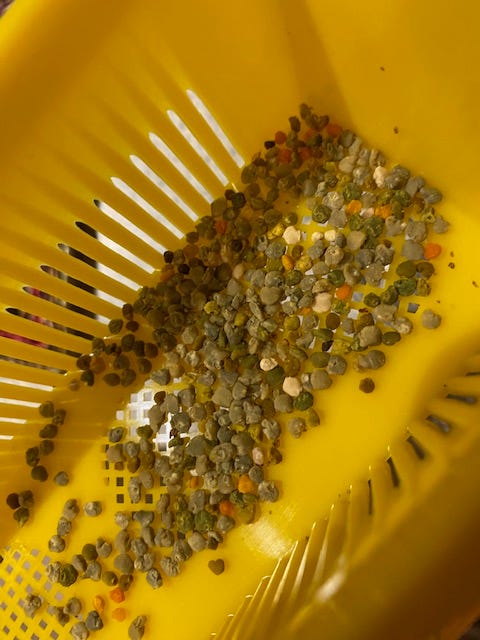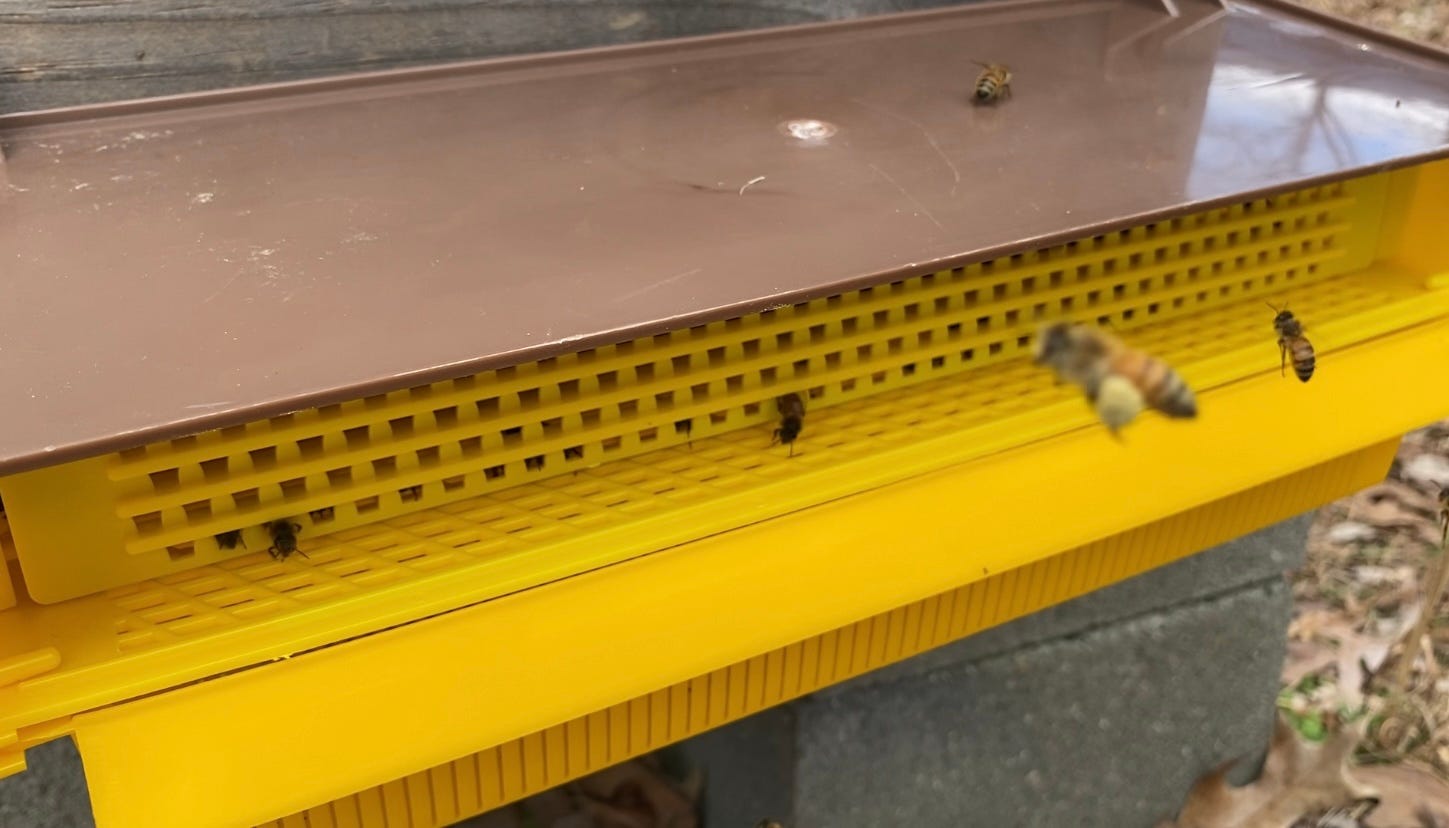What to know about harvesting pollen
I’ve harvested pollen a few times this spring and the process surprised me.
In the countdown to this blog’s one-year anniversary, the next piece of news I’m sharing this week is that I’m adding more apiaries. (An apiary is a collection of hives.) This comes with two approaches. One, in my research about natural beekeeping, renowned honeybee researcher Tom Seeley finds that keeping bees more closely aligned with how they would live in the wild includes spacing hives at least 100’ apart. With my Chatham County bees this spring, I started another apiary about 200’ away from my original one. I’ve also scouted 2 more sites around the property for moving or adding hives. I don’t plan to keep a single hive in each spot—I aim to keep 2 or 3, which will make it easier to share resources between colonies when necessary. My second approach to new apiaries: Over the winter we had the opportunity to acquire land adjacent to my mountain bees near Bryson City. I’ve scouted a new apiary site on the land and it comes with some challenges: It’s remote with no utilities or open sun exposure, it doesn’t have maintained vehicle access, it’s fairly steep terrain, and we’ve seen bear on the trail cam. This makes it challenging to move equipment in, move harvests out, and have a strong bear-proof setup. I’m working through those challenges over the next year and hope to add a hive to the new property next spring.
In less than a month I’ll celebrate 7 years of keeping bees. Although I shouldn’t be surprised, I still surprise myself when the curtain is pulled aside on another aspect of beekeeping. I knew absolutely nothing about the pollen harvesting process before this year. The more I learned about the health benefits of pollen, the more I wanted to know about collecting pollen from my own hives.
Responsible pollen collection practices
I manage my hives according to Certified Naturally Grown’s (CNG) apiary standards even though I don’t have the capacity right now to comply with CNG’s inspection requirements. CNG suggests one should only harvest pollen when a colony has at least one half of a frame of pollen for every 8 frames of brood. They also pose that collections shouldn’t last more than 1 week and, if more pollen is desired, harvests should be spaced 3 weeks apart. A worker bee goes from egg to an emerged bee in 21 days. With the queen laying about 2,000 eggs daily in production seasons, responsible pollen collection means ensuring the colony has what they need to produce healthy bees.
How is pollen harvested from a hive?
Pollen is harvested from honey bee colonies with a pollen trap placed at the hive entrance. I’ve started to use a plastic trap, which has slats, a swinging entry door, and exit holes. As the foragers return to the colony and push through the swinging door, pollen falls from the honey bee’s corbicula (“pollen basket” on their back legs) and into a sliding harvest tray. The pollen can be poured straight from the tray into a jar and consumed raw or preserved. One beekeeper warned me that there’s a risk of stingers falling into the trap, so it’s best to sort through the pollen and remove debris. With a few harvests behind me now, I haven’t seen anything like that happen—yet.
Raw pollen and storing pollen
I’ve been enjoying raw pollen straight from the hive topped on yogurt, in smoothies, and in salad dressings. I keep raw pollen in the fridge when I know I’ll use it within a few days. Raw pollen can also be frozen. Storing pollen at room temperature requires dehydration because pollen has a high moisture content and can easily mold. Dehydrating helps reduce the risk of mold and gives it a longer shelf life.
Working with the weather
Like anything associated with the bees, the weather influences hive management practices. Pollen traps are only used on sunny days with no rain in the forecast. Rain not only prevents workers from foraging, but rain will ruin the pollen if it gets wet in the trap. The traps are added in the morning and emptied or removed in the evening. In my initial pollen collection attempts this spring, I experimented with adding the trap at noon and collecting at sunset, and adding in the morning and collecting at noon. This helped to gauge the volume of pollen sources and foraging efforts, take advantage of rain-free times, and minimize colony resource loss to harvesting.
What does pollen taste like?
There’s really not a single answer because bees forage pollen from various sources. It would be like asking, what does cake taste like? Well, there’s angel food cake, devil’s food cake, flourless cake, red velvet, etc. Each has their own unique flavor. From my experience this spring, the pollens I’ve tasted have a slight floral flavor, which I’ve only noticed when trying pollen solely on its own. When on yogurt or in a salad, the flavor is so mild that I don’t even notice that it’s there.
What do you think about pollen?







